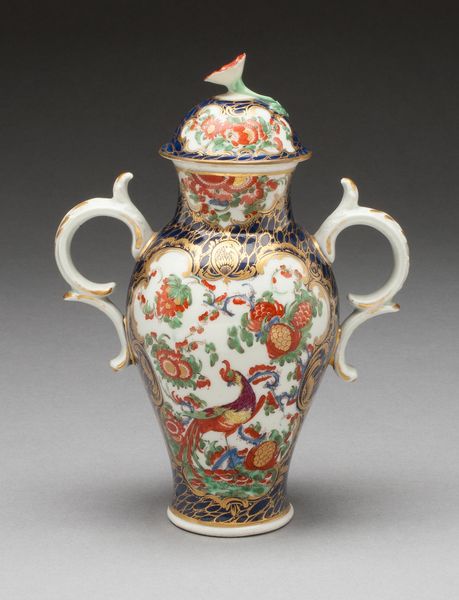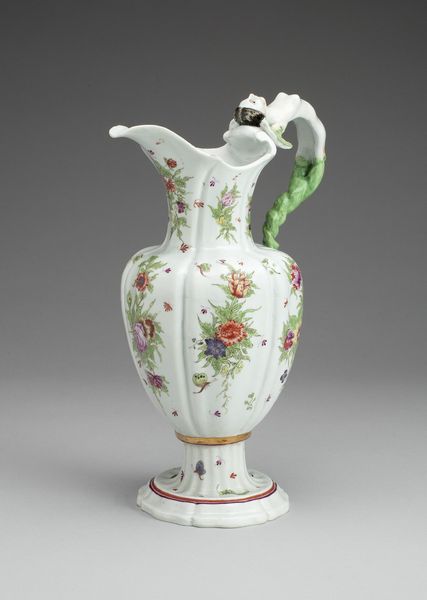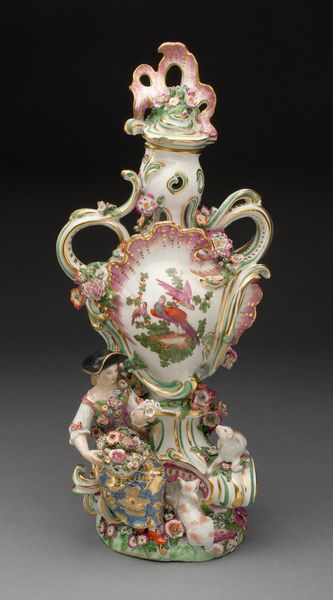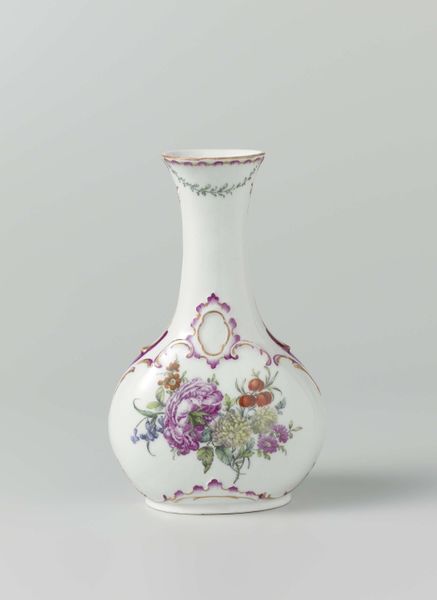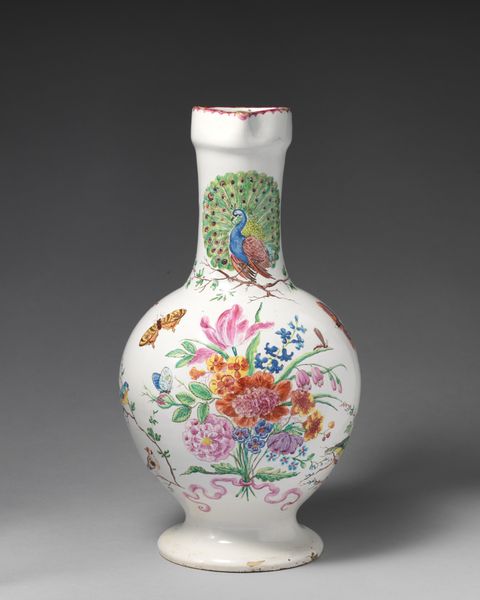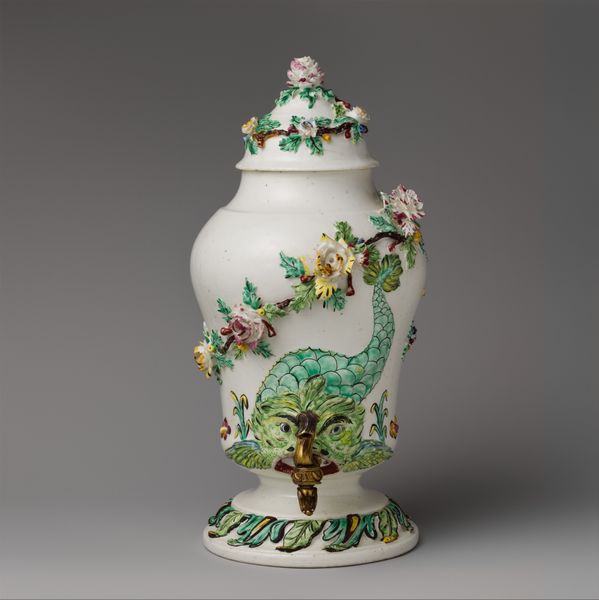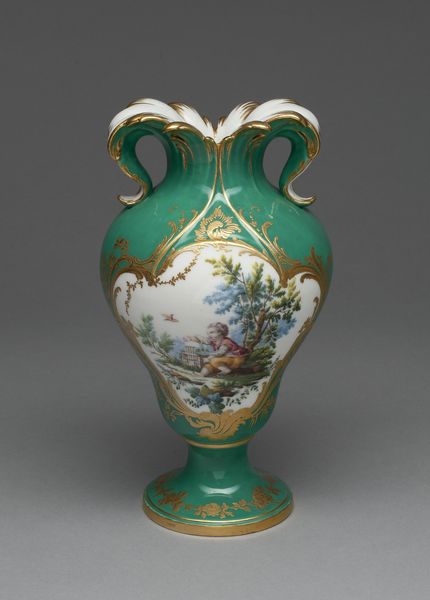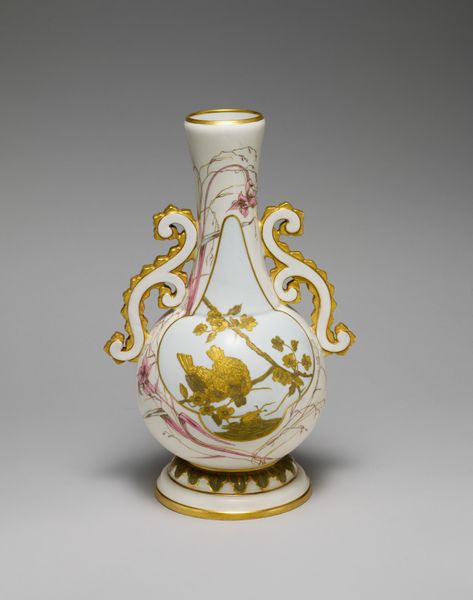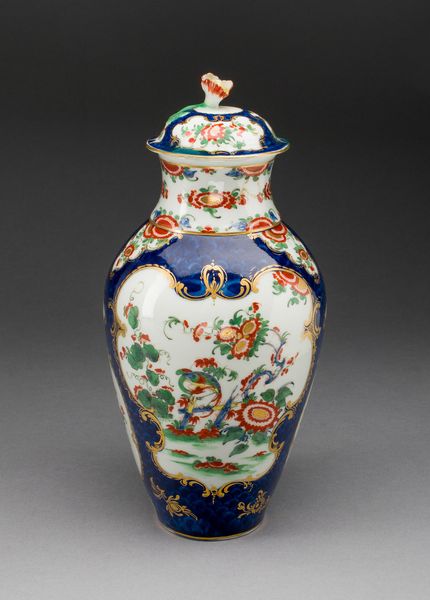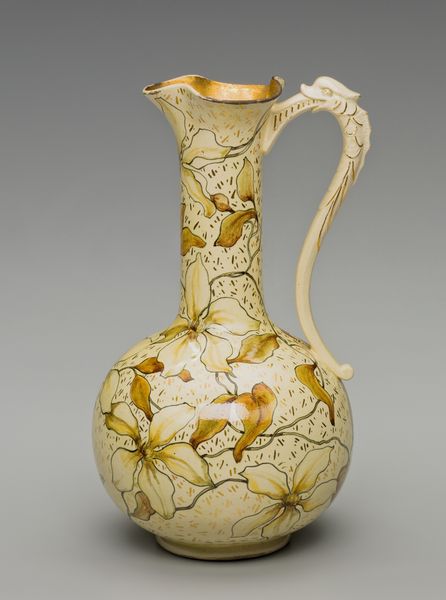
ceramic, porcelain, inorganic-material
#
ceramic
#
vase
#
porcelain
#
inorganic-material
#
ceramic
#
decorative-art
#
rococo
Dimensions: H. 19 cm (7 1/2 in.)
Copyright: Public Domain
Curator: The first word that springs to mind is “delicate." It looks like something out of a fairytale. All swirling forms and impossible lightness. Editor: Precisely! This is a porcelain vase, likely crafted between 1749 and 1752, during the height of the Rococo period. The Art Institute of Chicago proudly holds this example of the celebrated artisan work of Jean-Claude Duplessis. Curator: Rococo! That explains it. It is like confectionary architecture - all sweetness and light. What is that imagery doing, emotionally, to the viewer? Editor: It plays on visual harmony using asymmetry in a powerful way. The vase blooms from a foliage-laden base into gilded handles shaped almost like elegant insect wings and from which sprout dainty porcelain flower appliques. The scattering of painted flower sprigs are a gesture towards both refined decoration but a sense of life barely captured and about to be set free. Curator: So it’s a structured representation of something entirely unstructured— nature in full, glorious abandon. The bright white surface throws those colored blooms into sharp relief. The translucency is incredible; I imagine when the light catches it just so, the vase must glow like a pearl. I am immediately imagining it in one of Fragonard’s paintings. Editor: Indeed. Porcelain in Europe, particularly at this time, was highly prized. Aristocratic display was often meant to convey power and wealth. A piece such as this signals the patron's refined tastes, echoing themes found in paintings of the time - evoking fleeting beauty as a reflection on earthly pleasures and power. It’s about controlled, curated display of a concept more than a representation of something naturally captured, which, to me, is telling of the era itself. Curator: An interesting object lesson there - perhaps more of a power-play disguised by its overt prettiness. Something of a Trojan Horse for the aristocracy... I rather like it! Editor: Perhaps this particular vase acted as a tiny beacon of beauty, or a subtle symbol of the elite at play; but either way, it’s definitely captured a feeling, or an atmosphere, with some élan.
Comments
No comments
Be the first to comment and join the conversation on the ultimate creative platform.


